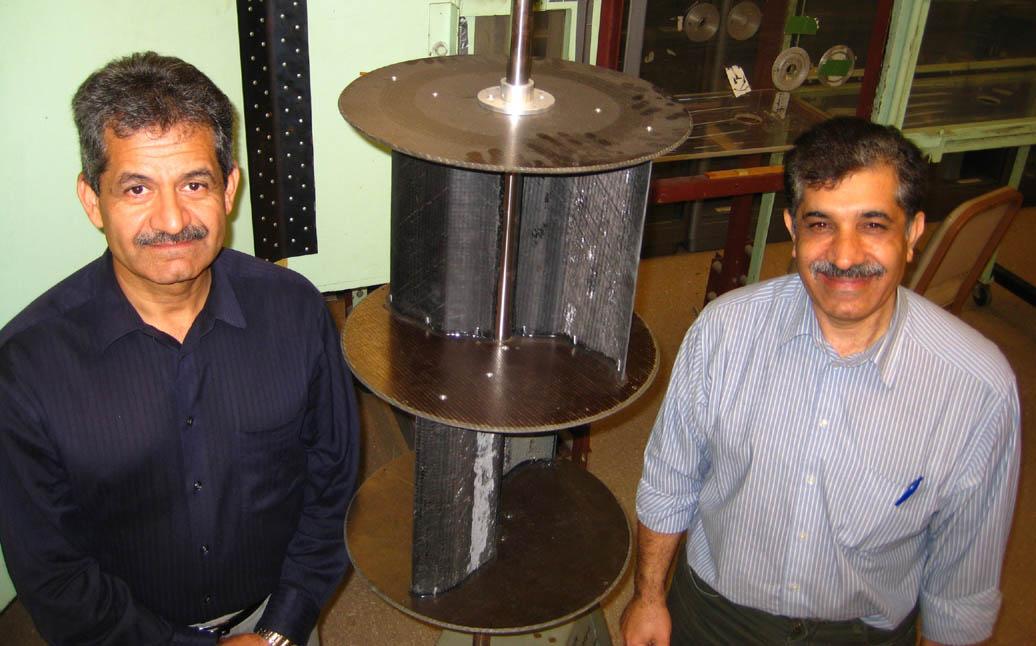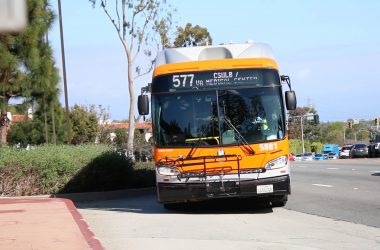Imagine walking through your neighborhood and noticing a strange vertical pole in front of a house with two S-shaped blades rotating in the wind, knowing it can generate enough energy to last a lifetime.
Two Cal State Long Beach engineering professors aim to edge this dream closer to being a reality.
Professors Hamid Rahai and Hamid Hefazi recently patented a high-efficiency vertical axis wind turbine for use in urban areas.
“We took the existing [vertical] models and tried to improve on them to become more efficient,” said Hefazi, a professor and the chair of mechanical and aerospace engineering department. “We applied engineering methodology, computer simulation and optimization methods to come up with a more efficient, specific form of a blade.”
There are two types of wind turbines.
Hefazi and Rahai focused on the vertical axis wind turbine, which has blades encased between two disks and an axis of rotation in a vertical position. These turbines are compact and can be easily used in urban environments.
However, existing vertical axis turbines operate on only 15 percent efficiency — or captured energy — making commercial use less attractive.
The blade they’ve developed is shaped like a skinny “S” with little grooves running along the inside to in order to trap as much wind as possible.
After testing their new design in a wind tunnel, results showed 30 percent to 40 percent efficiency, making their design more practical than older vertical models.
“The standard [inefficient] models … sell for something like $2,000 depending on the size,” Hefazi said. “But if we have an efficient one like what we think we have, it becomes economically feasible and viable to build something and sell it for $1,500 because in a couple of years you’ll get your money back, and from there on you get free electricity.”
The second type of turbine, the horizontal wind turbine, looks like a windmill. Many examples of this type line the highways running through Palm Springs.
Its axis of rotation is horizontal and produces more electricity than vertical turbines. However, the size of a horizontal wind turbine is too big for city use.
“You can’t put them on the streets or on top of a billboard,” Hefazi said. “You have to be in some desert. The vertical [turbines] can be small, compact and used in confined urban areas.”
The size of the vertical turbine depends on its use. For example, a 3- to 4-foot vertical wind turbine can generate enough electricity for a house.
The cost of a wind turbine will be relatively cheap, from a few hundred dollars to less than a thousand for the public. The exact cost will depend on how many turbines are being manufactured.
The turbine is designed to fit more than one blade, making it more versatile. The vertical turbines are not as direction-specific as the horizontal, meaning that no matter which way the wind is blowing, it will catch that wind and make the fan spin to generate electricity.
Funding for the professors’ research came from a one-year $80,000 grant from the California Energy Commission for one year. The two professors spent between 18 months and two years to come up with the design.
After it became patented, CSULB’s Patent Committee took a 5 percent share.
Several companies, centered as far away as South Africa to as close as Texas, have been interested in their design, but the professors must first do field tests for further research.
Hefazi understands renewable energy is important and every contribution helps.
“It is a rewarding experience and that’s why we thought about it,” Hefazi said.




